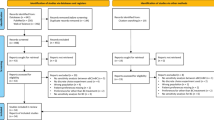Abstract
The purpose of the study was to examine variables that influence patients’ decisions to undergo treatment for metastatic breast cancer as part of a larger effort to understand the utility of biomarkers in treatment decisions. An online survey containing treatment scenarios for a conjoint analysis was e-mailed to members of breast cancer support organizations. The survey contained 14 different scenarios in which survey respondents with a history of metastatic breast cancer were asked to choose between two treatments and whether or not they would undergo the treatment. The scenarios were designed based on paclitaxel and capecitabine profiles related to medication format, likelihood of benefit, and side effects. The likelihood of benefit and likelihood/severity of side effects associated with these two drugs were varied based on the range of predictability afforded by current biomarkers. Most of the 641 respondents indicated that they would opt to undergo a treatment with 27 or 33 % likelihood of benefit regardless of the toxicity scenario presented. In general, a high percentage of respondents indicated that they would choose treatment in all of the scenarios (e.g., for an intravenous medication with a 20–50 % likelihood of benefit and a 20–60 % likelihood of moderate peripheral neuropathy for 1 year, 65–94 % of respondents indicated that they would choose treatment). The conclusion is that this study found that likelihood of benefit was more important than toxicity when considering particular benefit and toxicity ranges associated with common treatment options for metastatic breast cancer.


Similar content being viewed by others
References
Hayman JA, Fairclough DL, Harris JR, Weeks JC (2007) Patient preferences concerning the trade-off between the risks and benefits of routine radiation therapy after conservative surgery for early-stage breast cancer. J Clin Oncol 15:1252–1260
McQuellon RP, Muss HB, Hoffman SL, Russell G, Craven B, Yellen SB (1995) Patient preferences for treatment of metastatic breast cancer: a study of women with early-stage breast cancer. J Clin Oncol 13:858–868
Duric VM, Butow PN, Sharpe L, Heritier S, Boyle F, Beith J, Wilcken NR, Coates AS, Simes RJ, Stockler MR (2008) Comparing patients’ and their partners’ preferences for adjuvant chemotherapy in early breast cancer. Patient Educ Couns 72:239–245
Simes RJ, Coates AS (2001) Patient preferences for adjuvant chemotherapy of early breast cancer: how much benefit is needed? J Natl Cancer Inst Monogr 30:146–152
Acknowledgments
The authors acknowledge contributions of the following individuals: Mary Ann Chapman, PhD, Visage Communications for editorial assistance in the preparation of this manuscript; John R. Howell, PhD, The Pennsylvania State University, Smeal College of Business for study design and analytical advice, as well as statistical testing; Andrew W. Stacey, MD, University of Michigan for statistical testing; Joseph Curry, President, Sawtooth Technologies, Inc. for survey programming, study design advice, utility calculation, and model development; and Mark Little, Senior Consultant, Sawtooth Technologies, Inc. for survey programming, including extensive customization of conjoint question presentation. This study was supported by the Department of Defense Grant # W81XWH-04-1-0468, subaward #: IUPUI4382808RAN Amendment 6, Mary L. Smith, Principal Investigator.
Conflict of interest
The authors declare that they have no conflict of interest.
Author information
Authors and Affiliations
Corresponding author
Electronic supplementary material
Below is the link to the electronic supplementary material.
Rights and permissions
About this article
Cite this article
Smith, M.L., White, C.B., Railey, E. et al. Examining and predicting drug preferences of patients with metastatic breast cancer: using conjoint analysis to examine attributes of paclitaxel and capecitabine. Breast Cancer Res Treat 145, 83–89 (2014). https://doi.org/10.1007/s10549-014-2909-7
Received:
Accepted:
Published:
Issue Date:
DOI: https://doi.org/10.1007/s10549-014-2909-7




